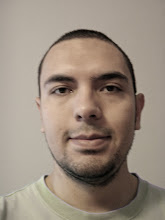
En la celebración del 120mo aniversario de la torre, SERERO arquitectos ha propuesto a la SETE reestructurar la recepción del público y las áreas de acceso a la torre. La propuesta tiene por objeto crear una extensión temporal horizontal de la tercera planta de la torre con el fin de aumentar la calidad del acceso del público, así como experimentar la fantástica vista de 360 grados de París.
Cuando Gustave Eiffel diseñó la torre, se imaginó que la torre se convertiría en el apoyo de una gran variedad de dispositivos científicos y experimentos para estudiar la gravedad y la presión del viento. La estructura de la torre se diseñó para un posible aumento de su peso y la simulación estructural de la torre Eiffel indica que es una estructura altamente hiperstática, que está diseñada para soportar un peso superior al que está soportando hoy en día.
Diseño generativo
El diseño se basa en un guión generativo, creando extensiones fuera de la estructura primaria de la torre. Inspirado por el concepto estructural de Eiffel de tirantes y vigas cruzadas en tres dimensiones, el script utiliza la estructura existente en la parte superior de la torre (un cubo de 10 por 10 metros) para generar tres tejidos estructurales que están interconectados. Estas capas se combinan para crear un tejido complejo, que se basa en la redundancia y la no repetición de las pautas para aumentar su eficacia estructural. En oposición con la ingeniería moderna (basada en el concepto de la repetición y la optimización), el proyecto de la Torre Eiffel de extensión se basa en un modelo alternativo de alto rendimiento.
*Due the celebration of the 120th birthday of the tower, SERERO architects proposed to the SETE to restructure the public reception and access areas of the tower. The proposal aims to create a temporary horizontal extension of the third floor of the tower in order to increase the quality of the access of the public as well as experiencing the fantastic 360 degrees sight of Paris.
When Gustave Eiffel designed the tower, he imagined that the tower would become the support of a great variety of scientific devices and experimentations to study gravity and wind pressure. The structure of the tower was therefore designed for possible increase of its weight and the structural simulation of the Eiffel tower indicates that it is a highly hyperstatic structure, which is designed for a weight higher than what it is supporting today.
Generative Design
The design is based on a generative script, creating branches out of the primary structure of the tower. Inspired by the structural concept of Eiffel of three-dimensional cross bracing beams, the script uses the existing structure at the top of the tower (a 10 by 10 meters cube) to generate 3 structural weaves, which are interconnected. These layers are combined to create a woven complex, which is based on the redundancy and the non-repetition of patterns to increase its structural performance. In opposition with modern engineering (based on the concept of repetition and optimization), the project for the Eiffel tower extension is based on an alternative model of high performance.
para más información / For further information:




















1 comentarios:
Éstas estrategias de proyecto resultan lo interesante de la arquitetura. Como decíamos, no tendiendo al fín en sí, sino a los medios para obtenerlo. Ésto de las estructuras generativas tienden también a aparecer en el creciemiento no sólo de entes orgánicos, sino de organismos complejos como las urbes. De hecho, hay plateamientos donde se propone llevar ésta analogía directamente a las estructuras para edificios de escala urbana. Búscate a un cuate llamado Mark Bearak, tiene cosas interesantes en proyectos para Brasil. Éstas cosas sólo surgen cuando se está consciente de que no tiene sentido construir sin proyectar.
Un Abrazo hermano
Publicar un comentario